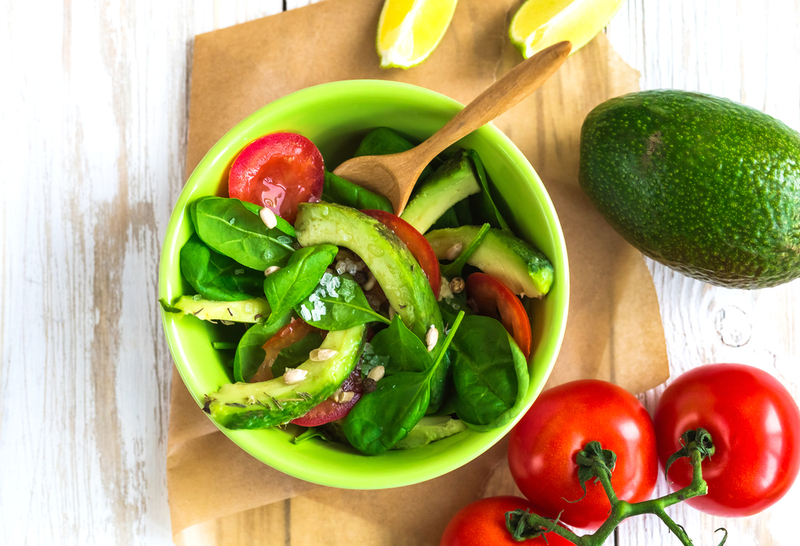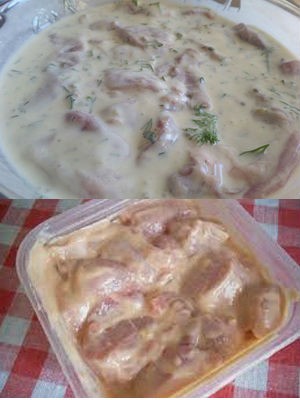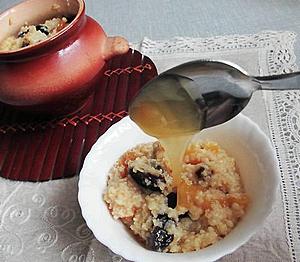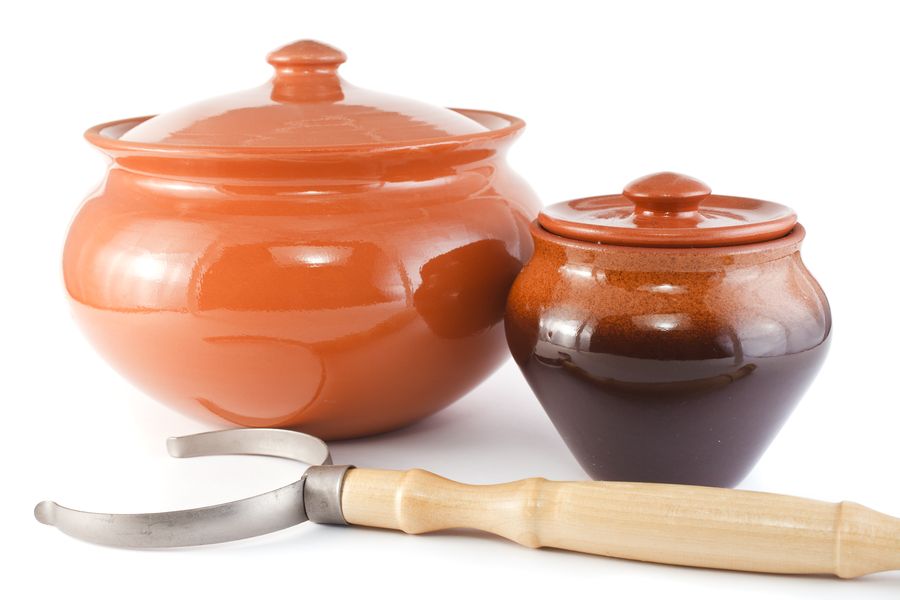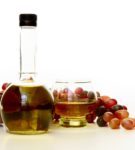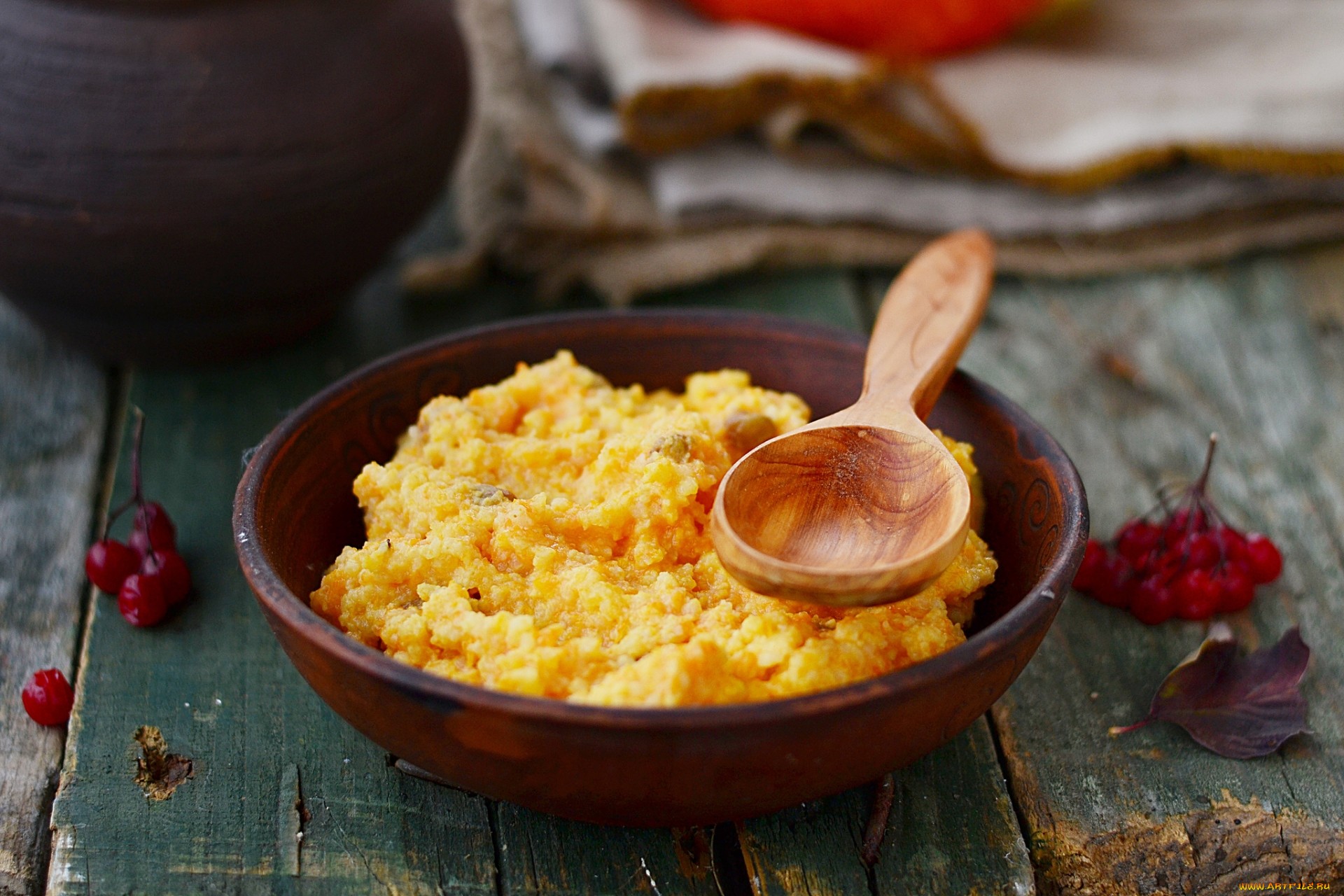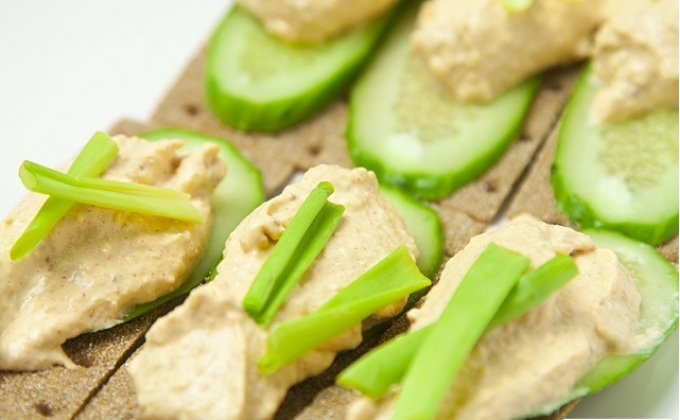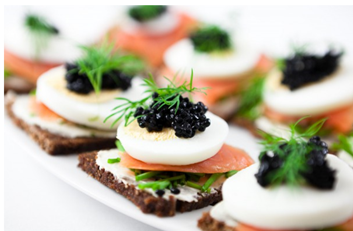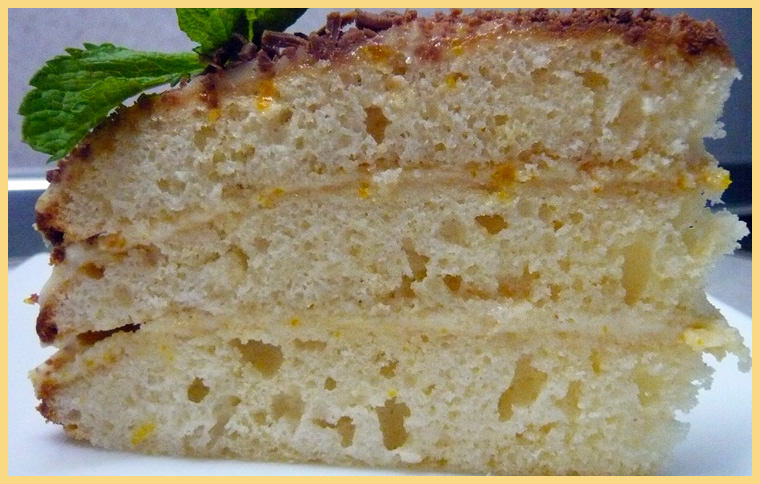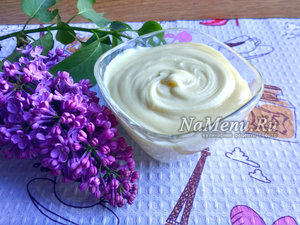How to measure flour at home. We measure without weighing
When we find a new recipe for ourselves, on the Internet or in a new cookbook, or maybe a friend has shared it, we first of all pay attention to the products necessary for cooking, and especially to their proportions. Quantities dry components (bulk, solid foods) are usually indicated in grams or measured in glasses, teaspoons or tablespoons. Well, with grams, everything is clear. If you have a kitchen scale available, then you probably know what to do. If there are no weights, then you need to somehow transfer our grams into glasses or spoons, based on how much this or that product is required. Large quantities are more convenient to measure with glasses. Here it will help us product weighting chart. It will also be needed for the recount, when it is more convenient for us to measure all quantities with the help of weights, and not to dirty glasses and spoons. But, it’s important to remember that in recipes adapted for Russia, a glass is not understood to mean beaker (minimum volume - 300 ml), and normal faceted(volume to risks - 200 ml, to the edges - 250 ml). In this case, the glass must be filled precisely to the risks at which the edges end, not necessary tamp. Volume teaspoon should be 5 ml, and the dining room - 18 ml. We collect dry products with a spoon with a slide.
In foreign culinary literature, quantities are not measured in glasses, but in cups. But this doesn’t really change anything, since a cup is the same glass filled to the brim — the same 250 ml. If you often come across recipes with “cups” instead of “glasses,” then the following information will be useful to you.
In this case we use a measuring cup, or we get ourselves a special set of measuring spoons. The benefit of such is on sale.Quantities liquid products It is indicated either in ml or in glasses, spoons. Sometimes indicate the value in grams. If glasses are indicated - we take a faceted glass, spoons are indicated - we use them, milliliters are indicated - we take a measuring cup, grams are indicated - we use scales, or according to the table we determine how many glasses or spoons are needed. And again, comes to our aid product weights table. Liquid foods should fill the spoons to the brim. We collect viscous products with a spoon with a slide.
If your kitchen does not have a faceted glass, use a volumetric one. Find the marks of 200 and 250 ml. For clarity, they can be emphasized with a bright marker. If you need a glass of flour, pour it to a bright mark. Of course, if the required amount of flour is a multiple of 200 grams, then it is more convenient to use a measuring cup (scale for flour). In this case, put flour in a glass with a spoon, and not scoop it up. In the latter case, voids may form. Small amounts of flour are more convenient to measure with a tablespoon. A spoon of flour is a spoon with a slide. Flour should be sifted only after the quantity necessary for the recipe is measured out, since the sifted flour does not lie so tightly.
How to measure the right amount of product, choose only for you. We hope that our pivot table will help you prepare your meals. For your convenience, the products in the table are in alphabetical order. Some products are grouped (legumes, cereals, nuts, etc.). The table indicates how many grams The product is contained to a certain extent.
| Product | 1 tablespoon | 1 teaspoon | 1 glass faceted 200 ml (to the rim) | 1 cup tea 250 ml (to the brim) |
|
|---|---|---|---|---|---|
| Jam | 45 | 20 | 270 | 330 | |
| Water | 18 | 5 | 200 | 250 | |
| BEAN: | Peas | 25 | 10 | 174 | 220 |
| Beans | 30 | 10 | 185 | 230 | |
| Lentils | 25 | 7 | 170 | 210 | |
| Dried mushrooms | 10 | 4 | |||
| Jam | 40 | 15 | - | - | |
| Baker's yeast | - | 5 g | - | - | |
| Gelatin (Powdered) | 15 | 5 | - | - | |
| Raisins | 25 | - | 130 | 165 | |
| Cocoa powder | 15 | 5 | 130 | - | |
| Potato starch | 12 | 6 | 130 | 160 | |
| Ground coffee | 20 | 7 | 80 | 100 | |
| Cornflakes | 7 | 2 | 40 | 50 | |
| GROUPS: | "Hercules" | 12 | 3 | 70 | 90 |
| Buckwheat (core) | 25 | 8 | 170 | 210 | |
| Corn | 20 | 6 | 145 | 180 | |
| Manna | 25 | 8 | 160 | 200 | |
| Oatmeal | 18 | 5 | 135 | 170 | |
| Rice | 25 | 8 | 185 | 230 | |
| Pearl barley | 25 | 8 | 185 | 230 | |
| Wheat | 20 | 6 | 145 | 180 | |
| Millet | 25 | 8 | 180 | 220 | |
| Sago | 20 | 6 | 145 | 180 | |
| Barley | 20 | 7 | 154 | 180 | |
| Liquor | 20 | 7 | - | - | |
| Citric acid (crystals) | 25 | 8 | - | - | |
| Poppy | 15 | 4 | 120 | 155 | |
| Mayonnaise, margarine (melted) | 15 | 4 | 180 | 230 | |
| Pasta | - | - | 190 | 230 | |
| Honey | 35 | 12 | 265 | 325 | |
| Vegetable oil | 17 | 5 | 180 | 225 | |
| Butter | 50 | 30 | - | - | |
| Ghee | 20 | 6 | 190 | 240 | |
| Honey (in liquid state) | 30 | 9 | 330 | 415 | |
| Milk, fermented baked milk, kefir, yogurt | 18 | 5 | 200 | 250 | |
| Condensed milk | 30 | 12 | 220 | 300 | |
| Milk powder | 20 | 10 | 100 | 120 | |
| Flour | 20 | 7 | 145 | 180 | |
| Corn flour | 30 | 10 | 130 | 160 | |
| Wheat, rye flour | 25 | 8 | 130 | 160 | |
| NUTS: | Peanuts peeled | 25 | 8 | 140 | 175 |
| Walnuts (core) | 30 | 10 | 130 | 165 | |
| Cedar | 10 | 4 | 110 | 140 | |
| Almonds (core) | 30 | 10 | 130 | 160 | |
| Crushed nuts | 20 | 7 | 90 | 120 | |
| Hazelnuts (core) | 30 | 10 | 130 | 170 | |
| Cereals | 14 | 4 | 100 | 180 | |
| Wheat flakes | 9 | 2 | 50 | 60 | |
| Jam | 36 | 12 | - | - | |
| Yogurt | 18 | 5 | 200 | 250 | |
| Sour cream 10% | 20 | 9 | 200 | 250 | |
| Sour cream 30% | 25 | 11 | 200 | 250 | |
| Melted fat | 20 | 8 | 200 | 240 | |
| Granulated sugar | 25 | 8 | 160 | 200 | |
| Powdered sugar | 25 | 10 | 140 | 190 | |
| Cream 20% | 18 | 5 | 200 | 250 | |
| Condensed cream with sugar | 30 | 13 | - | - | |
| Drinking soda | 28 | 12 | - | - | |
| Juices (fruit, vegetable) | 18 | 5 | 200 | 250 | |
| Salt | 15 | 5 | 260 | 325 | |
| SPICE: | Ground cloves | - | 3 | - | - |
| Whole cloves | - | 4 | - | - | |
| Mustard | - | 4 | - | - | |
| Dry mustard | - | 3 | - | - | |
| Ground ginger | - | 2 | - | - | |
| Ground cinnamon | 20 | 8 | - | - | |
| Allspice peas | - | 5 | - | - | |
| Ground allspice | - | 4.5 | - | - | |
| Ground black pepper | 12 | 5 | - | - | |
| Black pepper peas | - | 6 | - | - | |
| Ground crackers | 20 | 5 | 110 | 130 | |
| Dried fruits | - | - | - | 80 | |
| Fat cottage cheese, nonfat | 17 | 6 | - | - | |
| Soft cottage cheese | 20 | 7 | - | - | |
| Curd | 18 | 6 | - | - | |
| Tomato paste | 30 | 10 | - | - | |
| Tomato sauce | 25 | 80 | 180 | 220 | |
| Vinegar | 15 | 5 | 200 | 250 | |
| BERRIES: | Lingonberry | - | - | 110 | 140 |
| Cherry | 30 | 5 | 130 | 165 | |
| Blueberry | - | - | 160 | 200 | |
| Blackberry | 40 | - | 150 | 190 | |
| Strawberry | 20 | - | 120 | 150 | |
| Cranberry | - | - | 110 | 140 | |
| Gooseberry | 40 | - | 160 | 210 | |
| Raspberry | 20 | - | 145 | 180 | |
| Red currants | 35 | - | 140 | 175 | |
| Black currant | 30 | - | 125 | 150 | |
| Sweet cherry | 30 | - | 130 | 165 | |
| Blueberries | - | - | 160 | 200 | |
| Mulberry | 40 | - | 135 | 195 | |
| Dried Rosehip | 20 | 6 | - | - | |
| Tea | 12-15 | 4 | - | - | |
| Egg powder | 25 | 10 | 80 | 100 | |
To make your dish tasty and aromatic, you need to know which spices are suitable for certain dishes:
For meat: red, black, allspice or cloves, marjoram, thyme, cumin, turmeric, onion, oregano.
For a bird: thyme, marjoram, rosemary, sage, thyme, basil.
For fish: bay leaf, white pepper, ginger, allspice, onion, coriander, chili pepper, mustard, dill, thyme.
For grilling:red pepper, allspice, cardamom, thyme, marjoram, nutmeg and nutmeg, cumin, ginger, chili.
For game:thyme, oregano, allspice, red pepper, juniper.
For stews:red pepper, ginger, turmeric, coriander, mustard, cardamom, caraway seeds, black pepper, allspice, nutmeg, cloves.
For cabbage: coriander, fennel, cumin, black mustard seed.
For potatoes: coriander, turmeric and asafoetida.
For beans: cumin, asafoetida, ginger, pepper, lavender mint and coriander.
For pickles: bay leaf, juniper (berries are added to marinades when cooking game meat and fish), dill branches with buds, flowers or seeds.
For fruits, juices, compotes: cinnamon, cloves, ginger, star anise, cardamom.
For pastes: white pepper, cinnamon, ginger, bay leaf, cloves, cinnamon, star anise, ginger, cardamom. For baking: cloves, cinnamon, star anise, ginger, cardamom, allspice, orange zest, anise, sesame, poppy seeds, vanilla.
For hot milk:cinnamon, cardamom, saffron.
How to weigh products without weights

On New Year's holidays, many of us cook various dishes, but not everyone has scales that are suitable for weighing a particular product, or they do not exist at all, but you must agree that the proportions in cooking are very important. So, in this article I will share with you some methods of weighing ingredients without using weights.
Instruction manual
Difficulty Level: Easy
1 step
1 tablespoon is equal to: 15 g of poppy, 20 g of cocoa, 25 g of rice, 20 g of wheat flour, 30 g of starch, 25 g of buckwheat, 15 g of oatmeal, 25 g of semolina, 30 g of salt, 20 g of sugar, 20 g of milk, 25 g of sour cream, 25 g of millet, 20 g of ghee, 20 g of honey, 50 g of butter, 20 g of vegetable oil, 15 g of vinegar, 20 g of tomato juice, 9 g of ground pepper.
2 step
1 teaspoon is equal to: 5 g of poppy seeds, 8 g of wheat flour, 10 g of starch, 5 g of oatmeal, 8 g of semolina, 10 g of salt, 10 g of sour cream, 5 g of ghee, 30 g of butter, 5 g of vegetable oil, 5 g of vinegar, 8 g of tomato puree, 3 g of citric acid 5g ground black pepper.
3 step
1 glass, the volume of which is 250 ml, is equal to: 155 g of poppy, 160 g of wheat flour, 200 g of starch, 100 g of oatmeal, 200 g of semolina, 230 g of rice, 220 g of millet, 100 g of pasta, 220 g of beans, 230 g of peas, 200 g of sugar, 325 g of salt, 250 g of milk, 250 g sour cream, 245 g ghee, 325 g honey, 210 g butter, 240 vegetable oil, 330 g jam, 250 g vinegar, 220 g tomato puree, 170 g hazelnuts, 160 g almonds, 175 g peeled peanuts, 200 g blueberries, 175 g red currants, 155 g black currants, 180 g raspberries, 190 g powdered sugar, 250 g cream, 50 g corn flakes, 165 g raisins, 70 g dried apples, 230 g marmalade, 340 g berry puree, 165 g cherries, 140 g lingonberries, 200 g blueberries, 190 g blackberries, 150 g strawberries, 145 g cranberries, 210 g gooseberries, 195 g mulberries.
How to weigh without scales?
Probably, not every housewife always has special kitchen scales at hand, but to find out the exact weight of certainof products often enough. Therefore, the question arises: How to measure without weights or how to weigh without weights? Of course, a kitchen scale is not an essential item, but cups, glasses, spoons can be found in every kitchen.
In order to find out the exact enoughmeasure of weight of bulk products , fruits, vegetablestake nuts or spices tea cup standard volume (250 ml) or old Soviet faceted glass (200 ml), a tablespoon (18 ml) or a teaspoon (5 ml) and pour the required amount of ingredients, the weight in grams of which can be found by following the instructions on the cooking table.
So how to weigh without weights? Very simple…
| Product | Glass (250ml) | Glass (200ml) | Tablespoon (18ml) | Teaspoon (5ml) |
|---|---|---|---|---|
| Water | 250 | 200 | 18 | 5 |
| Granulated sugar | 200 | 180 | 25 | 8 |
| Powdered sugar | 190 | 160 | 25 | 10 |
| Salt | 325 | 260 | 15 | 10 |
| Drinking soda | - | - | 28 | 12 |
| Citric Acid | - | - | 25 | 7 |
| Vegetable oil | 245 | 190 | 20 | 5 |
| Liquid honey | 415 | 330 | 30 | 9 |
| Gelatin Powder | - | - | 15 | 5 |
| Cocoa powder | - | - | 25 | 9 |
| Ground coffee | - | - | 20 | 7 |
| Poppy | - | 135 | 18 | 5 |
| Liquor | - | - | 20 | 7 |
| Melted margarine | 230 | 180 | 15 | 4 |
| Condensed milk | - | - | 30 | 12 |
| Animal oil | 240 | 185 | 17 | 5 |
| Whole milk | 255 | 204 | 18 | 5 |
| Wheat flour | 160 | 130 | 30 | 10 |
| Egg powder | 100 | 80 | 25 | 10 |
| Starch | 180 | 150 | 30 | 10 |
| Sour cream | 250 | 210 | 25 | 10 |
| Cream | 250 | 200 | 14 | 5 |
| Vinegar | - | - | 15 | 5 |
| Tomato sauce | 220 | 180 | 25 | 8 |
| Tomato paste | - | - | 30 | 10 |
| Fruit and vegetable juices | 250 | 200 | 18 | 5 |
Cereals
Dessert
Berries
| Product | Glass (250ml) | Glass (200ml) | Tablespoon (18ml) | Teaspoon (5ml) |
|---|---|---|---|---|
| Cherries | 165 | 130 | 30 | - |
| Lingonberry | 140 | 110 | - | - |
| Blueberry | 200 | 160 | - | - |
| Blackberry | 190 | 150 | 40 | - |
| Strawberry | 150 | 120 | 25 | - |
| Cranberry | 145 | 115 | - | - |
| Gooseberry | 210 | 165 | 40 | - |
| Raspberry | 180 | 145 | 20 | - |
| Black currant | 155 | 125 | 30 | - |
| Red currants | 175 | 140 | 35 | - |
| Blueberries | 200 | 160 | - | - |
| Mulberry | 195 | 155 | 40 | - |
| Rosehip dry | - | - | 20 | 6 |
Vegetables and fruits
- Product (medium size) \u003e\u003e\u003e 1 pc (g)
- Potatoes >>> 100
- Onion >>> 75
- Carrot >>> 75
- Parsley root >>> 50
- Cabbage >>> 1200-1500
- Cucumber >>> 100
- Tomatoes (Tomatoes) >>> 75-115
- Apricot >>> 26
- Banana >>> 72
- Orange >>> 100-150
- Lemon >>> 60
- Pear >>> 125
- The apples >>> 90-200
- Figs >>> 40
- Plum >>> 30
Nuts
Spices, spices (g)
Spices, spices (pcs)
- Carnation (12 pcs) \u003e\u003e\u003e 1 g
- Bay leaf (7pcs) \u003e\u003e\u003e 1 g
- Peppercorn Pepper (30pcs) \u003e\u003e\u003e 1g
if the scales are broken or missing at all? Many recipes require accurate proportions. Culinary products may not work if the flour is less or more than necessary.
How to weigh flour at home if there are no scales? For weighing, kitchen utensils can be used: a glass, a can, a spoon, a pan. It is convenient to use a measuring cup with labels printed on the sides, which determine the weight of the flour. This, of course, is not an analytical (laboratory) balance, but still simple and quick.
How to weigh flour with a spoon?
Another item that can be used to weigh flour is an ordinary tablespoon or teaspoon. For weighing, scoop up the flour with a spoon and shake gently so that the excess flour crumbles. The resulting hill of flour in a tablespoon weighs 25 grams, and a teaspoon will fit 10 g.
How to weigh flour with a glass?
How to weigh flour without scales with a measuring glass? When weighing with a glass, an ordinary faceted glass with a rim is best suited, the volume of which is 250 ml. To determine the weight of flour, it is necessary to pour it into a glass with a spoon. At the same time, do not tamp and shake it. A filled glass will hold 180 g of flour to the very edge. Flour, poured to the rim, will hold 160 g.
Weighing flour with other means at hand without weights
In the absence of time, in order to weigh flour without weights, you can use two pots (large and small). Still need packaging of any cereals or sugar in 1 kg. Place the kilogram product in a small saucepan. Place it with the load in a larger pan.
Pour water gently into a large pot all the way to the edge. Next, remove the load from a small pan and fill it with flour. The rising water in a large pan to the edge will mean that the flour is exactly 1 kg. Thus, we now know how to weigh flour. We hope that these helpful tips will help you bake a culinary product.
How to weigh flour without weights, in a glass, spoon - video
In the absence of a kitchen scale or, at least, a special measuring container with marks, measuring the amount of flour needed for the recipe is not so difficult. Other kitchen appliances will come to the rescue. Read how to use them correctly.
How to measure grams without weights
Clearly observe the proportions and put the exact amount of cereal, water, spices specified in the recipe - the key to any successful dish. This is especially important for baking. If you accidentally add more or less flour than necessary, the dough will come out completely wrong. In the absence of a special device, it will be possible to weigh it with other improvised means. Each housewife will find useful information on how to do this correctly.
How many grams of flour in a faceted glass
First of all, it is worth saying that this subject is a loyal assistant in the measurement of products for many housewives. It is very accurate and will certainly help you easily gain the right amount of any liquid or granular substance. If you fill the wheat flour of the highest grade to the very top with a hat, you get 160 g. This value is approximate. If the vessel is filled along the rim, then it will be 130 g.
If you don’t know how to measure flour without weights, use these tips:
- The grain product must be whole. Do not try to scoop up the flour from the general package, but carefully pour in small portions. Otherwise, voids form near the walls of the dishes, due to which the volume will not be enough for the dish.
- Do not tamp dry matter, do not tap the vessel when filling. Because of this, the result will be completely different.
- Use the table that contains data on the volume of different products. It can be easily found on the net.
- It is advisable to choose for your measurements a separate dish, the most accurate, and always use only it. If you take a different one each time, then the same recipe may differ in taste or even deteriorate.
How many grams of flour in a tablespoon
Some recipes require very little, what then? In this case, measure with spoons. This is a simple task. You need to determine how much flour is in a tablespoon. If with a slide, then 25-30 g, depending on what it will be in height, and if without it, then 20 g. 1 tsp. it will hold from 9 to 12 g. It will fit 15-20 g into the dessert. These values \u200b\u200bare true if the grain product is dry, because wet will be heavier. You also need to remember that some cutlery, especially left over from Soviet times, is heavier than modern ones.
How much flour is in a glass 250 mm
This is a thin-walled product. Such vessels are also called tea vessels. How to measure flour without weights with it? If you fill the vessel, leaving about a centimeter empty from above, then you will get 160 g. It's about wheat. Corn will fit as much, because they are the same in density. But rye is denser, so it will fit 130 g. Potato, on the contrary, is lighter, it will be 180 g.

How to weigh flour without weights
Not every housewife has a device for measuring the mass of products in the kitchen, however, people cope very well even with very complex recipes. In order to weigh the right portion, you can use vessels or spoons: dessert, table, tea. Having at hand one of these items, you can easily pick up the necessary grain product for baking.
How many tablespoons in a glass of flour
Depends on the type and fullness. If the faceted 130-160 g, then it will be 4.5-5 tbsp. l with a hat. There are five in the teahouse. If you take from the first spoon without a slide, you get from six and a half to eight. If you use tea, then 8. It is not clear to many how to measure 100 grams of flour without having a measuring device at hand. Everything is very simple: take 5 tbsp. l without a slide or 3.5 with it. Now you know how many tablespoons in 100 grams of flour.
If you have a faceted glass, then to get 100 g you need to pour so much that the flour does not reach the rim by about a centimeter. There is one more way. Sprinkle the flour a little, ramming it. To do this, after each new serving, carefully knock the dishes on the table. Dial the highest hat you can. You will get about 200-210 g. Then, from the resulting volume, separate about half by eye. This will be 100 g.
Often, the correct proportions must be observed in cooking. This is true for those who follow a diet when the diet is written in grams. The best option is to use a kitchen scale, but they are not always present at home. Then the question arises: How to weigh products without weights?
History of weights
The history of the origin of scales goes back to ancient times. As the story tells, they first appeared in the 5th millennium BC. in Mesopotamia. Scientists suggest that initially people weighed the goods on hand, but gradually began to look for new ways. As a result, the first measuring system appeared - a wooden beam, to the ends of which bowls were attached. In one bowl, the goods to be weighed are weighted, and in another unit of measure, the standard. Often, grain served as a weight standard.

In ancient India, the task arose - how to weigh an elephant? That's what the ancestors thought of. They placed the elephant in the boat and noted the water level to which it plunged. After that, instead of an elephant, the boat began to be filled with stones. When she plunged to the desired depth, the stones were dragged onto land and began to be measured using available methods - the same wooden beam.
How to measure the weight of products without weights
To weigh the products yourself at home, you need to use household utensils: glasses, measuring spoons, mugs, pans, jars. Almost all measurements at home can be carried out using these items.
The standard volumes of home measuring items are as follows: faceted glass - 250 ml, tablespoon - 20 ml, tea - 5 ml.

In addition, there is a very simple and time-tested method of weighing kg. product. You will need 2 pots of different sizes and 1 kg of sugar. Put a load (sugar) in a smaller pan. Put one pan in another. It is important that one pan fits completely in the second. Pour water into a large pot so that it reaches the edges of another. Thus, you mark the water level, indicating the mass of one kilogram. Instead of sugar, you can use any other product, and in order not to make a mistake with the weight, monitor the water level.
There are certain subtleties in weighing different types of products of different consistencies.
When weighing liquids (milk, butter, kefir), measuring cups and spoons should be poured to the brim. Products of viscous (condensed milk, jam) or dry (sugar, flour, cereals) consistency must be filled with a full false or a glass with a "slide".
Bulk products can not be sifted or tamped, otherwise the wrong result.

How to weigh products without weights
Many people like to cook and experiment in the process, “by eye” add the necessary products to dishes. As a result, the best dishes are born. But sometimes without exact observance of the recipe, nothing will work. To get a confectionery "masterpiece", you must follow the instructions and measure the products to a gram. First of all, this approach relates to baking. Let's look at how to measure the main foods that make up sugary foods.

How to weigh flour without scales?
Adding too much flour to a dish can ruin it completely. Therefore, it is so important to correctly measure the right amount of flour.
This can be done with the help of spoons or a glass, as most housewives do. Keep in mind that flour must be weighed in its pure form without sifting. You cannot tamp it in a glass.\u003e You can measure the right amount of flour with a spoon. Scoop the flour, shake a little from the spoon, so that a small “slide” remains. If you measure with a teaspoon, then 10 grams comes out, in the dining room - 25 grams, in a glass - 180 grams of flour.
To the question: How to weigh sugar without weights? The answer is on the same principle. In a teaspoon with a “slide” contains 9 grams, in the dining room - 24 grams, in a faceted glass filled to the brim - 200 grams of sugar.
If honey is part of the comb, the question arises: How to weigh honey without scales at home? After all, this is not a loose product. Honey is a viscous fluid. But the measurement system remains the same, the tanks need to be filled to the brim, preferably with a slide. 325 g honey is included in a faceted glass, 35 g in a tablespoon, and 12 grams in a teaspoon.

The nuances and subtleties of weighing
For those who strictly monitor their diet, it is extremely important to measure portions in grams. And this applies to absolutely any dish. Few people know in which order it is necessary to weigh all the components. Below we will open some secrets:
- Cereals need to be measured only in a dry form. If you do this by washing them or after soaking in water, the mass will change greatly. By the same principle, pasta is weighed.
- To eat a “healthy” piece of meat, you need to remove the skin and cut off excess fat. You can also act with fruits - peel them from the skin, cut them, and only then weigh them. As a result, you weigh exactly what you are going to eat.
- Fish and meat must be weighed unwashed. Otherwise, excess liquid will be present during weighing.
- When preparing a complex dish - first cut all the ingredients, and then weigh.
Table - how to weigh without weights
An indispensable table of product weights is available to help all keen on cooking.

Applying the knowledge gained in cooking, you can not be afraid to make a mistake with the mass of ingredients. Feel free to start exploring new recipes. It is not necessary to purchase a kitchen scale. It is enough to know how to weigh products at home without weights.
